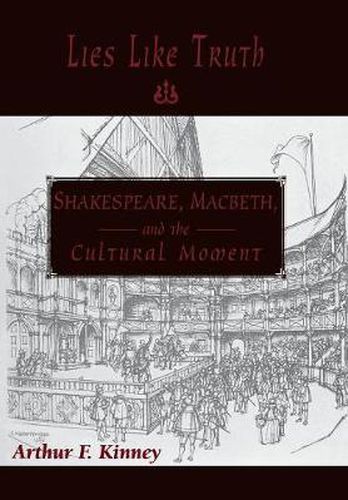Readings Newsletter
Become a Readings Member to make your shopping experience even easier.
Sign in or sign up for free!
You’re not far away from qualifying for FREE standard shipping within Australia
You’ve qualified for FREE standard shipping within Australia
The cart is loading…






This title is printed to order. This book may have been self-published. If so, we cannot guarantee the quality of the content. In the main most books will have gone through the editing process however some may not. We therefore suggest that you be aware of this before ordering this book. If in doubt check either the author or publisher’s details as we are unable to accept any returns unless they are faulty. Please contact us if you have any questions.
What was it like to be in the audience of the Globe Theatre in 1606? By demonstrating fundmental connections between audience reaction then and the use of computers today, Renaissance scholar Arthur Kinney explores the cultural moment of one of Shakespeare’s most popular tragedies. Examining the cultural practices and beliefs that influenced Shakespeare’s writing of
Macbeth , Kinney reconstructs how playgoers in 1606 understood that drama when it was first presented and shows how many congruent and often conflicting perspectives played on their minds. Calling on hundreds of documents with which Shakespeare might have been familiar - books and pamphlets circulating in England from 1600 to 1606 as well as manuscripts and statutes - he records a wide range of cultural practices related to nearly every aspect of a society in that day: politics, religion, economics, medicine, family life, witchcraft and more. Kinney proposes a new way of reading this period’s texts, drawing us closer to the way dramatic plays such as
Macbeth
were understood from early modern times to beyond today’s technological revolution. In the course of this inquiry, he seeks to determine whether the 1623 text of
Macbeth
that we now have is anything like the original 1606 performance.
Lies Like Truth
shows that the computer revolution of our time can help us revisit Shakespeare’s works in their own time and thereby enhance our understanding of them. This work unlocks a cultural moment frozen in time and broadens our appreciation of Shakespeare.
$9.00 standard shipping within Australia
FREE standard shipping within Australia for orders over $100.00
Express & International shipping calculated at checkout
This title is printed to order. This book may have been self-published. If so, we cannot guarantee the quality of the content. In the main most books will have gone through the editing process however some may not. We therefore suggest that you be aware of this before ordering this book. If in doubt check either the author or publisher’s details as we are unable to accept any returns unless they are faulty. Please contact us if you have any questions.
What was it like to be in the audience of the Globe Theatre in 1606? By demonstrating fundmental connections between audience reaction then and the use of computers today, Renaissance scholar Arthur Kinney explores the cultural moment of one of Shakespeare’s most popular tragedies. Examining the cultural practices and beliefs that influenced Shakespeare’s writing of
Macbeth , Kinney reconstructs how playgoers in 1606 understood that drama when it was first presented and shows how many congruent and often conflicting perspectives played on their minds. Calling on hundreds of documents with which Shakespeare might have been familiar - books and pamphlets circulating in England from 1600 to 1606 as well as manuscripts and statutes - he records a wide range of cultural practices related to nearly every aspect of a society in that day: politics, religion, economics, medicine, family life, witchcraft and more. Kinney proposes a new way of reading this period’s texts, drawing us closer to the way dramatic plays such as
Macbeth
were understood from early modern times to beyond today’s technological revolution. In the course of this inquiry, he seeks to determine whether the 1623 text of
Macbeth
that we now have is anything like the original 1606 performance.
Lies Like Truth
shows that the computer revolution of our time can help us revisit Shakespeare’s works in their own time and thereby enhance our understanding of them. This work unlocks a cultural moment frozen in time and broadens our appreciation of Shakespeare.